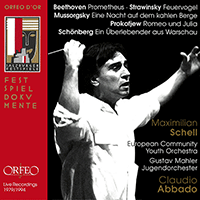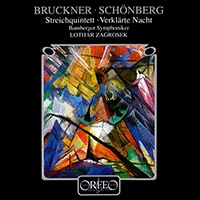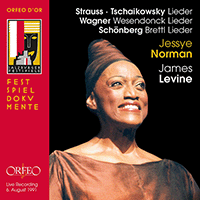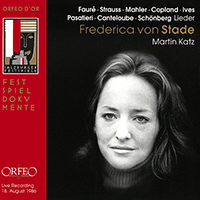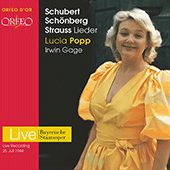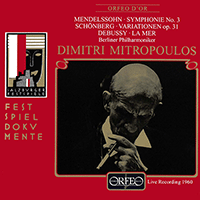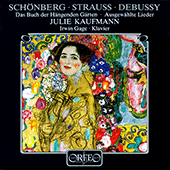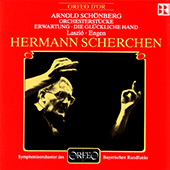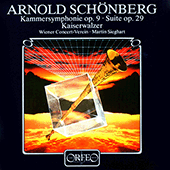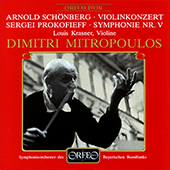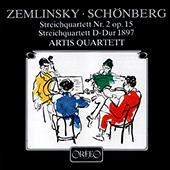
Arnold Schoenberg (1874 - 1951)
Arnold Schoenberg exercised very considerable influence over the course of music in the 20th century. This was particularly through his development and promulgation of compositional theories in which unity in a work is provided by the use of a determined series, usually consisting of the 12 possible different semitones, their order also inverted or taken in retrograde form and in transposed versions. Schoenberg’s earlier compositions are post-Romantic in character, written before the period in which he developed his theories of atonality (music without a key or tonal centre). Born in Vienna in 1874, he spent his early career in Berlin, until the rise to power of Hitler made it necessary to leave Germany and find safety in America, where he died in 1951. With his pupils Anton Webern and Alban Berg, both of whom he outlived, he represents a group of composers known as the Second Viennese School.
Stage Works
Schoenberg’s most important opera is Moses und Aron, of which he completed only two of the three acts. Other stage works include Erwartung (‘Expectation’), a one-act melodrama, the drama with music Die glückliche Hand (‘The Fortunate Hand’) and the one-act Von heute auf morgen (‘From Today to Tomorrow’).
Choral and Vocal Music
Gurre-Lieder, written between 1901 and 1903, is a work of Wagnerian proportions and mood for solo voices, large chorus and orchestra. Other, later vocal music includes A Survivor from Warsaw (1947) for narrator, male voices and orchestra. Solo songs range from the 1909 settings of Stefan George in Das Buch der hängenden Gärten (‘The Book of the Hanging Gardens’) to the cabaret songs he wrote for the Berlin Überbrettl in his earlier years. Pierrot lunaire, a study of madness based on German translations of seven poems by Albert Giraud and using Sprechgesang (words half spoken, half sung), was completed in 1912.
Orchestral Music
Schoenberg’s music for orchestra includes a violin concerto, Pelleas und Melisande (a symphonic poem based on Maurice Maeterlinck’s medieval drama) and Five Orchestral Pieces. He transcribed for cello a harpsichord concerto by the 18th-century composer Monn.
Chamber Music
In addition to four string quartets and a late string trio, Schoenberg’s post-Romantic Verklärte Nacht (‘Transfigured Night’) of 1899 is particularly noteworthy.
Keyboard Music
Schoenberg wrote Variations on a Recitative for organ, but most of his keyboard music is for piano, principally in a series of pieces that demonstrate the development of his theories of composition.







